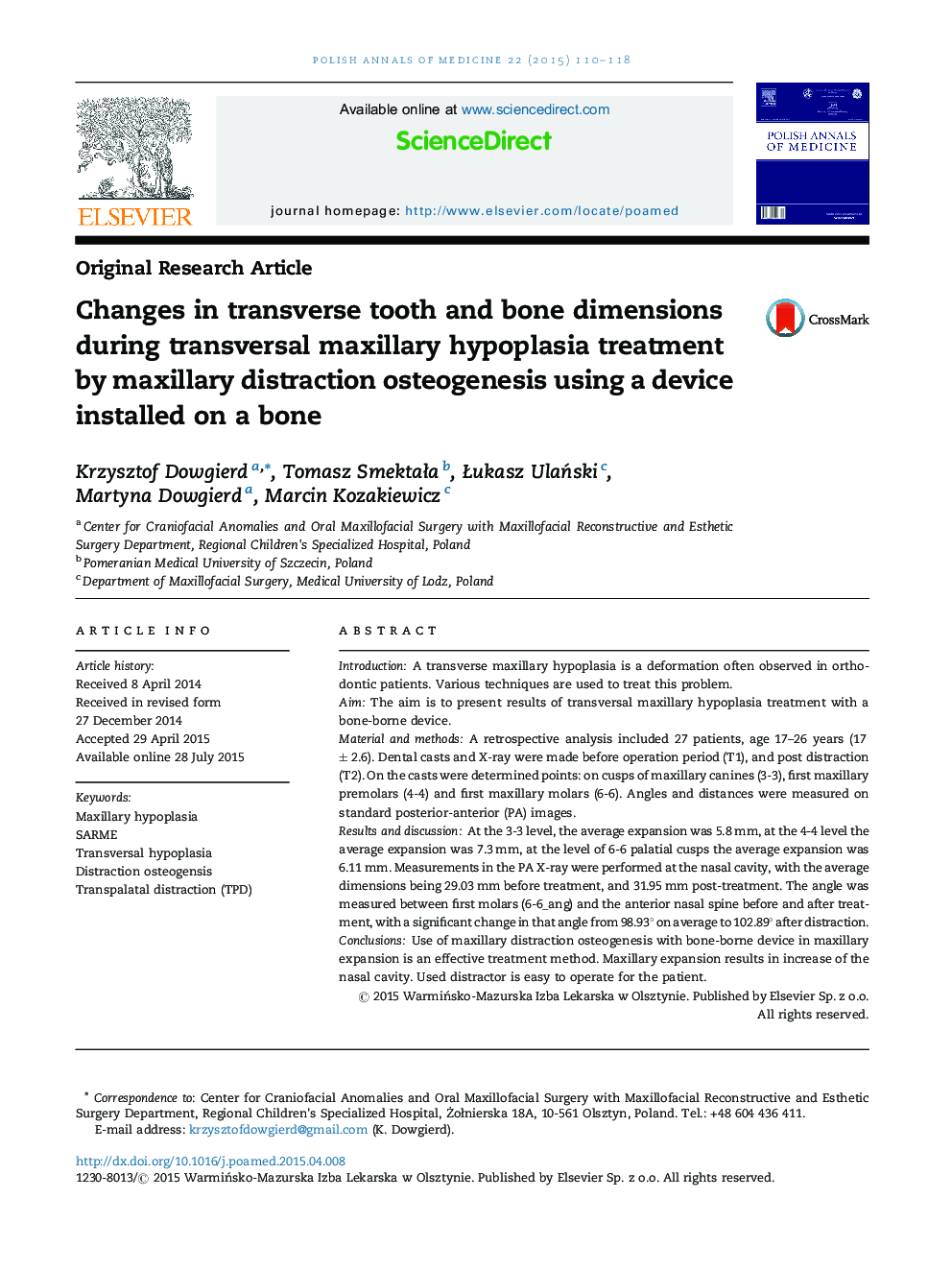| Article ID | Journal | Published Year | Pages | File Type |
|---|---|---|---|---|
| 2680526 | Polish Annals of Medicine | 2015 | 9 Pages |
IntroductionA transverse maxillary hypoplasia is a deformation often observed in orthodontic patients. Various techniques are used to treat this problem.AimThe aim is to present results of transversal maxillary hypoplasia treatment with a bone-borne device.Material and methodsA retrospective analysis included 27 patients, age 17–26 years (17 ± 2.6). Dental casts and X-ray were made before operation period (T1), and post distraction (T2). On the casts were determined points: on cusps of maxillary canines (3-3), first maxillary premolars (4-4) and first maxillary molars (6-6). Angles and distances were measured on standard posterior-anterior (PA) images.Results and discussionAt the 3-3 level, the average expansion was 5.8 mm, at the 4-4 level the average expansion was 7.3 mm, at the level of 6-6 palatial cusps the average expansion was 6.11 mm. Measurements in the PA X-ray were performed at the nasal cavity, with the average dimensions being 29.03 mm before treatment, and 31.95 mm post-treatment. The angle was measured between first molars (6-6_ang) and the anterior nasal spine before and after treatment, with a significant change in that angle from 98.93° on average to 102.89° after distraction.ConclusionsUse of maxillary distraction osteogenesis with bone-borne device in maxillary expansion is an effective treatment method. Maxillary expansion results in increase of the nasal cavity. Used distractor is easy to operate for the patient.
